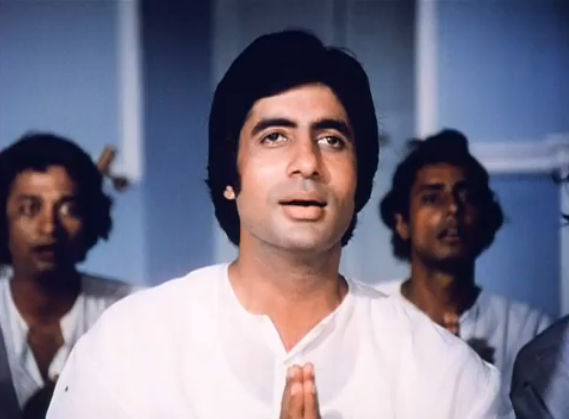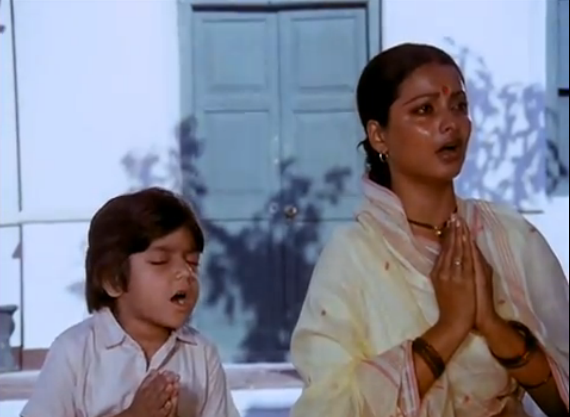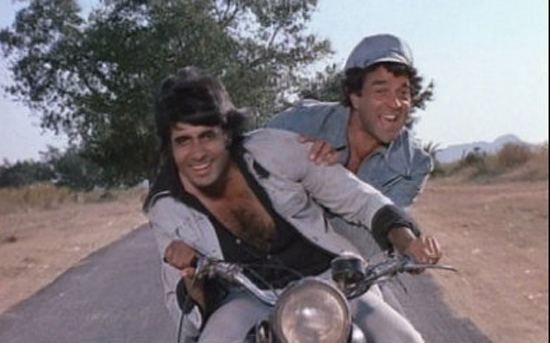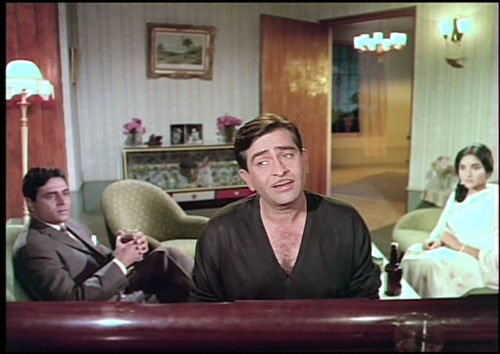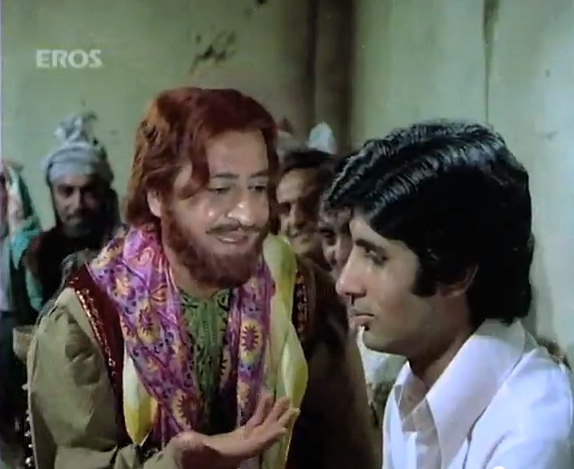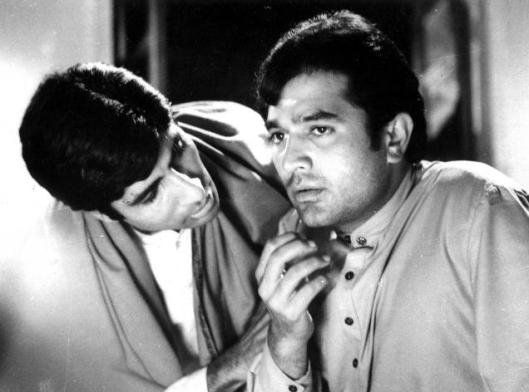
In the famous climax of Abhimaan (1973), Jaya Bhaduri and Amitabh Bachhan reunite on-stage for an emotional rendition of “Tere Mere Milan Ki.”
Today we showcase the lyrics and full English translation of “Tere Mere Milan Ki” from the 1973 hit film Abhimaan. Based loosely on the life of famous playback singer Kishore Kumar and his first wife, Ruma Ghosh, the film centers around a talented newlywed couple whose marriage is threatened by professional jealousy. When high-rolling pop singer Amitabh Bacchan marries innocent country girl Jaya Bhaduri, her newly-discovered musical prowess steals his limelight with alarming disharmony.
The show-stopping number “Tere Mere Milan Ki” is a song of reconciliation in the film’s finale. Flowing with tenderness and hope, the enchanting duet gives Amitabh Bacchan and Jaya Bhaduri another chance to love each other. Is their marriage worth saving? Read more about the film’s story and behind-the-scenes gossip in our earlier review of Abhimaan!
Rightfully earning S.D. Burman the 1973 Filmfare Award for Best Music Director, “Tere Mere Milan Ki” is a classic example of Rabindra-sangeet in Bollywood. The song dazzles with Majrooh Sultanpuri’s poetic nuances, a metaphorical glimpse into the creation of a family. He describes the lover’s eyes as “chanchal,” which can mean playful, but also implies something that does not remain in one spot, a certain liveliness in spirit. With every “dekho na,” he directs that gaze back toward the night of their union, while she looks toward what lies ahead and the family they will begin together.
For me, this song has always glowed. Lata Mangeshkar’s voice resonates after the opening stanza like an angel descending from heaven. But it was only after seeing the film that I realized the heroine of the story had recently suffered a miscarriage. Thus the lines “nanhaa sa gul khilegaa a.Nganaa” are more than a hope for the future, but a true reflection of their family’s dream deferred. The entire song changed its meaning for me, and became if possible, even more poignant.
We hope you enjoy our English translation and lyrics to “Tere Mere Milan Ki” from Abhimaan (1973) below! Follow along with the video here.
Tere Mere Milan Ki Yeh Raina Lyrics and Translation:
Male:
Tere mere milan kii yeh rainaa
On the night of your and my union
Nayaa koi gul khilaayegi
A new rose will bloom
Tabhi to chanchal hai tere naina
That is why your eyes are playful
Dekho na! Dekho na, tere mere milan kii yeh rainaa
Look! Look at the night of your and my union
Female:
Nanha sa gul khilegaa a.Nganaa
A small rose will bloom upon our balcony
Suunii baiyaa sajegii, sajnaa
She will decorate my lonely arms, beloved
Male:
Jaise khele chandaa baadal mei.N
Just as the moon plays with the clouds
Khelegaa woh tere aa.Nchal mei.N
She will play in the folds of your saari
Female:
Chandaniyaa gungunaayegi
The rays of the moon will sing
Tabhi to chanchal hai tere naina
That is why your eyes are playful
Dekho na! Dekho na, tere mere milan kii yeh rainaa
Look! Look at the night of your and my union
Male:
Tujhe thaame kaii hatho.N se
I will hold your hand many times
Miluu.Nga madbharii raato.N mei.N
I will meet you many intoxicating nights
Female:
Jagaake aansuunii si dhaDkan
By awakening this unfamiliar heartbeat
Balamwaa, bhar duu.Ngii teraa man
My beloved, I will fill your soul
Male:
Nayii adaa se sataayegii
With a new style you will torment me
Tabhi to chanchal hai tere naina
That is why your eyes are playful
Dekho na! Dekho na, tere mere milan kii yeh rainaa
Look! Look at the night of your and my union
Both:
Nayaa koi gul khilaayegi
A new rose will bloom
Tabhi to chanchal hai tere naina
That is why your eyes are playful
Dekho na! Dekho na, tere mere milan kii yeh rainaa
Look! Look at the night of your and my union
Glossary:
milan: meeting, union; rainaa: night; gul: rose; tabhi: this is why, hence; chanchal: restless, playful; nainaa: eyes; nanhaa: little, tiny; a.Nganaa: balcony; suunii: lonely; baiyaa: arms; sajnaa [verb]: to decorate; sajnaa [noun]: darling, beloved; chandaa: moon; baadal: clouds; aa.Nchal: the end of a saari (pallu) or dupatta; chandan: silver, rays of the moon; gungunaanaa: to hum, to sing; haath thaamnaa: to hold hands; madbharii: filled with intoxication; jagaanaa: to wake up; aansuunii: unfamiliar, unheard; dhaDkan: heartbeat; balamwaa: lover; man: soul, heart; adaa: style; sataanaa: to torment

Art mimics life as Amitabh Bachhan comforts Jaya Bhaduri in “Tere Mere Milan Ki” from Abhimaan (1973).
This lovely Lata-Kishore duet was requested by fan Dilip! Thank you for the beautiful request! For more songs from Abhimaan, check out our earlier post on the lovely Rafi-Lata duet “Teri Bindiya Re.”
– Mrs. 55




